Mexican Palm, Sombrero palm
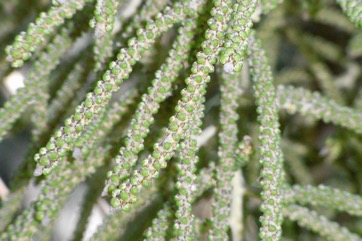
A tropical plant. It can grow in temperate and tropical regions. It does best in rich, sandy soils. It can grow in poor skeletal soils in rocky areas. It needs a protected, sunny position. It is drought resistant and frost tolerant. It grows in semi-arid places. It needs well drained soil. It grows in open woodland between 320 and 1760 m altitude in Central America. It suits hardiness zones 10-12.
Also known as:
Capulin, Miche, Michire, Palma criolla, Palma dulce, Palma de sombrero, Rock palm, Suyate
Synonyms
- Acoelorraphe cookii Bartlett
- Acoelorraphe salvadorensis (H.Wendl.ex Becc.) Bartlett
- Brahea bella L.H.Bailey
- Brahea berlandieri Bartlett
- Brahea calcarea Liebm.
- Brahea conzattii Bartlett
- Brahea dulcis var. montereyensis Becc.
- Brahea salvadorensis H. Wendl. ex Becc.
- Corypha dulcis Kunth
- Corypha frigida Mohl ex Mart.
- Erythea salvadorensis (H.Wendl. ex Becc.)H.E.Moore
Edible Portion
- Berries, Fruit, Palm heart
Where does Mexican Palm grow?
Found in: Australia, Belize, Central America, El Salvador, Guatemala, Honduras, Mexico, Nicaragua, North America, Peru, South America
Notes: There are about 12-16 Brahea species. They all grow in Mexico.
Status: Fruit are sold in markets.
Growing Mexican Palm, Sombrero palm
Cultivation: Plants are grown from seed. Seed grow easily. They take 3-6 months to germinate. Seed should be sown fresh after a good soaking.
Edible Uses: The fruit are eaten raw. They are also made into preserves. The tender part of the palm heart is boiled, roasted or eaten raw.
Production: It is relatively slow growing.
Nutrition Info
per 100g edible portion| Edible Part | Energy (kcal) | Protein (g) | Iron (mg) | Vitamin A (ug) | Vitamin c (mg) | Zinc (mg) | % Water |
|---|---|---|---|---|---|---|---|
| Fruit | - | - | - | - | - | - |
Mexican Palm, Sombrero palm Photos

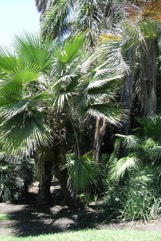
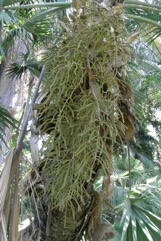
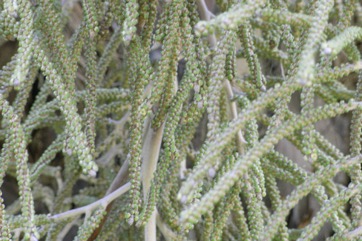
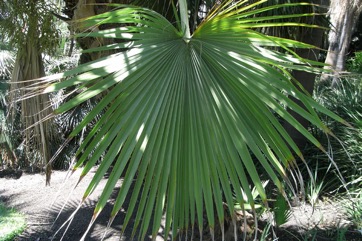
References
Balick, M.J. and Beck, H.T., (Ed.), 1990, Useful palms of the World. A Synoptic Bibliography. Colombia p 598
Bircher, A. G. & Bircher, W. H., 2000, Encyclopedia of Fruit Trees and Edible Flowering Plants in Egypt and the Subtropics. AUC Press. p 63
Bodkin, F., 1991, Encyclopedia Botanica. Cornstalk publishing, p 167
Casas, A., et al, 1996, Plant Management Among the Nahua and the Mixtec in the Balsas River Basin, Mexico: An Ethnobotanical Approach to the Study of Plant Domestication. Human Ecology, Vol. 24, No. 4 pp. 455-478
Etherington, K., & Imwold, D., (Eds), 2001, Botanica's Trees & Shrubs. The illustrated A-Z of over 8500 trees and shrubs. Random House, Australia. p 141
Facciola, S., 1998, Cornucopia 2: a Source Book of Edible Plants. Kampong Publications, p 27
Gibbons, M., 2003, A pocket guide to Palms. Chartwell Books. p 56
Grandtner, M. M., 2008, World Dictionary of Trees. Wood and Forest Science Department. Laval University, Quebec, Qc Canada. (Internet database http://www.WDT.QC.ca)
Haynes, J., & McLaughlin, J., 2000, Edible palms and Their Uses. University of Florida Fact sheet MCDE-00-50-1 p 4
Hedrick, U.P., 1919, (Ed.), Sturtevant's edible plants of the world. p 112
Henderson, A., Galeano, G and Bernal, R., 1995, Field Guide to the Palms of the Americas. Princeton. p 56
Hist. nat. palm. 3:244, t. 137, 162. 1838
Janick, J. & Paul, R. E. (Eds.), 2008, The Encyclopedia of Fruit & Nuts. CABI p 105
Johnson, D.V., 1998, Tropical palms. Non-wood Forest products 10. FAO Rome. p 85
Jones, D.L., 1994, Palms throughout the World. Smithtonian Institution, Washington. p 54, 148
Jones, D.L., 2000, Palms of Australia 3rd edition. Reed/New Holland. p 126
Pulido, M.T. and Coronel-Ortega, M., 2015, Ethnoecology of the palm Brahea dulcis (Kunth) Mart. in central Mexico. Journal or Ethnobiology and Ethnomedicine, 11:1
Rangel-Landa, S., et al, 2017, Sociocultural and ecological factors influencing management of edible and non-edible plants: the case of Ixcatlan, Mexico. Journal of Ethnobiology and Ethnomedicine. 13:59
Riffle, R.L. & Craft, P., 2003, An Encyclopedia of Cultivated Palms. Timber Press. p 277
Schuler, S., (Ed.), 1977, Simon & Schuster's Guide to Trees. Simon & Schuster. No. 48
Segura, S. et al, 2018, The edible fruit species in Mexico. Genet Resour Crop Evol (2018) 65:1767–1793
Standley, P. C., 1926, Trees and Shrubs of Mexico. Contributions from the United States National Herbarium Vol. 23 p 75
Turreira-Garcia, N., et al, 2015, Wild edible plant knowledge, distribution and transmission: a case study of the Achi Mayans of Guatemala. Journal of Ethnobiology and Ethnomedicine. 11:52
USDA, ARS, National Genetic Resources Program. Germplasm Resources Information Network - (GRIN). [Online Database] National Germplasm Resources Laboratory, Beltsville, Maryland. Available: www.ars-grin.gov/cgi-bin/npgs/html/econ.pl (10 April 2000)
www.desert-tropicals.com